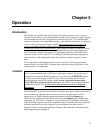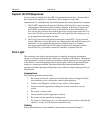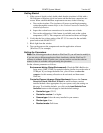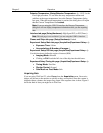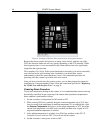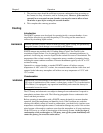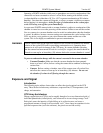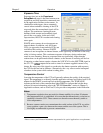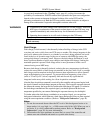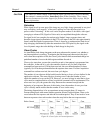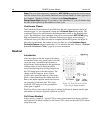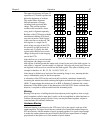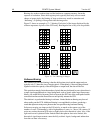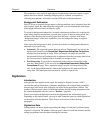
42 PI-MTE System Manual Version 4.C
Operating a PI-MTE with the visible nose in atmosphere can result in condensation if the
camera has not been evacuated to at least 1 mTorr before running with chilled coolant
(coolant should be no colder than +10° C to +15°C to prevent condensation at 50% relative
humidity). Over time the vacuum will degrade, so always evacuate a visible nose camera
before running it in atmosphere. At the first sign of condensation on the coolant pipes
or the CCD array, turn off the system immediately.
An open-nose PI-MTE camera inside a vacuum chamber is subject to condensation if the
chamber is vented too soon after powering off the camera. Failure to turn off the coolant
flow to a camera in a vacuum chamber can also result in condensation when the chamber
is vented. In addition, because vacuum venting can contaminate the cooled surface of the
CCD, we advise you to position a gate valve between the camera and the rest of the
system. This is also highly recommended to prevent contamination.
PI-MTE cameras that use the open nose depend on the vacuum environment for thermal
isolation of the cooled CCD and for preventing condensation on it. Operating these
cameras in air will result in damage to the CCD array. In vacuum chamber operation,
after the camera has been turned off and the coolant flow stopped, the camera should be
allowed to warm up for at least thirty (30) minutes before the vacuum chamber is vented.
To prevent condensation damage while the camera is mounted in the vacuum chamber:
Vacuum Chamber: Make sure that the vacuum chamber has been pumped
down to at least 1 mTorr, before cooling the camera below ambient or turning on
coolant flow.
Camera: Before venting a chamber, turn off the camera, turn off coolant flow,
and allow the camera to warm up for at least thirty (30) minutes. Do not vent
the chamber if coolant is still flowing through the camera.
Exposure and Signal
Introduction
The following topics address factors that can affect the signal acquired on the CCD
array. These factors include array architecture, exposure time, CCD temperature, dark
charge, and saturation.
CCD Array Architecture
Charge coupled devices (CCDs) can be roughly thought of as a two-dimensional grid of
individual photodiodes (called pixels), each connected to its own charge storage “well.”
Each pixel senses the intensity of light falling on its collection area, and stores a
proportional amount of charge in its associated “well.” Once charge accumulates for the
specified exposure time (set in the software), the pixels are read out serially.
WARNING




